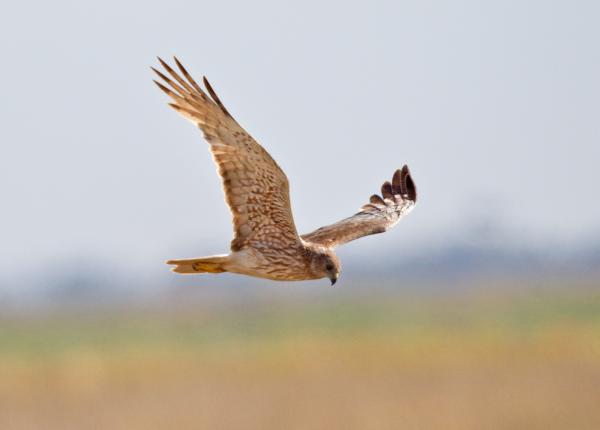Did You Know?
- This species is also known by a few other names including Australasian Marsh-harrier, Gould's Harrier, Pacific Harrier, Pacific Marsh Harrier, and Swamp Hawk.
How The Peregrine Fund is Helping
Though The Peregrine Fund doesn't work directly with the Swamp Harrier, our efforts in scientific research, habitat conservation, education, and community development help conserve birds of prey around the world. We also supply literature to researchers from our avian research library, which helps scientists around the world gather and share important information on raptor conservation. In addition, our Global Raptor Impact Network gives raptor researchers tools to more efficiently conduct their own studies while contributing to a global program. GRIN also provides citizen scientists a way to participate in raptor science and conservation.
Where They Live
The Swamp Hawk is found in New Guinea, Melanesia, Australia, New Zealand, and Polynesia east to Tonga and Fiji. It was also introduced to the Society Islands. This species spends a lot of time flying low over open country, including lakes, swamps, wetlands, grasslands, coastal heaths, and croplands.
What They Do
The Swamp Harrier roosts, or rests, on the ground, often in large groups of 20 to 200 birds. Though it normally forages for food on its own, it sometimes congregates in larger numbers in areas where a lot of food is available.
Why They Need our Help
This species is categorized as Least Concern. It is fairly common throughout its range but it does face several threats, including loss of habitat when wetlands are drained, human disturbance of nests, shooting and collisions with vehicles near roads.
What They Eat
The Swamp Harrier has a varied diet. It will prey upon mammals, birds and their eggs, rats, reptiles, amphibians, fish, insects, and carrion. Forages by low, slow quartering and soaring, and it seizes prey by diving or dropping to the ground or water surface, sometimes after hovering. It also harasses waterbirds - such as grebes - to the point of exhaustion or it sometimes drowns them! It is also known to steal food from other birds of prey.
Nests, Eggs, and Young
The Swamp Harrier builds a platform nest made of sticks, reeds, grass, and other plants. It places its nest among tall grasses, shrubs or reeds directly on the ground, in water, or, rarely, in a low bushy tree. The female will lay between 3 and 7 bluish-white eggs, which must be incubated for around 33 days. After the nestlings hatch, they will grow quickly. They will fly for the first time when they are between 43-46 days old. But there is more to being a bird than just flying. These harriers need to learn how to hunt, avoid danger and otherwise survive on their own. To do so, they spend about five weeks after fledging in their parents' territory learning these important survival skills.
Swamp Harrier and the World Center for Birds of Prey
The World Center for Birds of Prey offers fun ways to learn about all birds of prey. Interactive activities, tours, interesting videos, and a children's room with activities from coloring sheets to quizzes to costumes await you. The visitor center has many live raptors on display, and in the fall you can observe some of the raptors showing off their flying skills during our Fall Flight Shows. This is a great chance to see birds of prey up close and learn about the wonderful and interesting adaptations they have in order to survive in their respective habitats. There is also a touch table with feathers and other natural objects available for exploration. Though we are far from the Swamp Harrier's distribution, the area around the World Center for Birds of Prey is a great place to look for wild Northern Harriers flying low over the hills. Plus, our knowledgeable staff is on hand year-round to answer any questions you may have about the Swamp Harrier or any other bird of prey.
References:
Debus, S. and G. M. Kirwan (2020). Swamp Harrier (Circus approximans), version 1.0. In Birds of the World (J. del Hoyo, A. Elliott, J. Sargatal, D. A. Christie, and E. de Juana, Editors). Cornell Lab of Ornithology, Ithaca, NY, USA. https://doi.org/10.2173/bow.swahar1.01
Global Raptor Information Network. 2022. Species account: Swamp Harrier Circus approximans. Downloaded from http://www.globalraptors.org on 25 Jul. 2022










